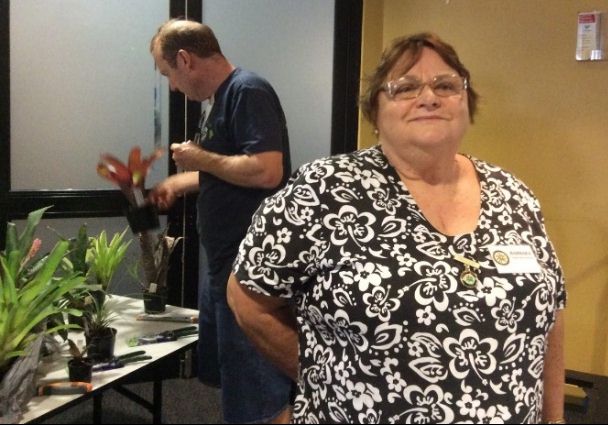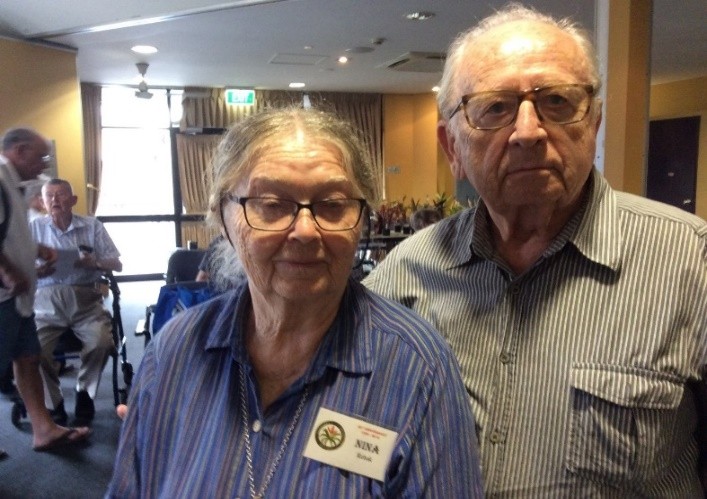 . . .
. . . 
Left: Tillandsia hamaleana, now Racinaea hamaleana; Right: Tillandsia cyanea, now Wallisia cyanea
April 2017
 . . .
. . . 
Left: Tillandsia hamaleana, now Racinaea hamaleana; Right: Tillandsia cyanea, now Wallisia cyanea
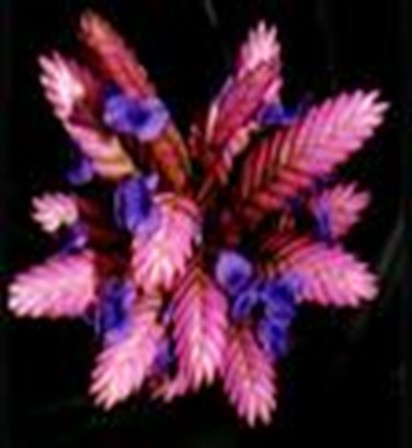 . . .
. . . 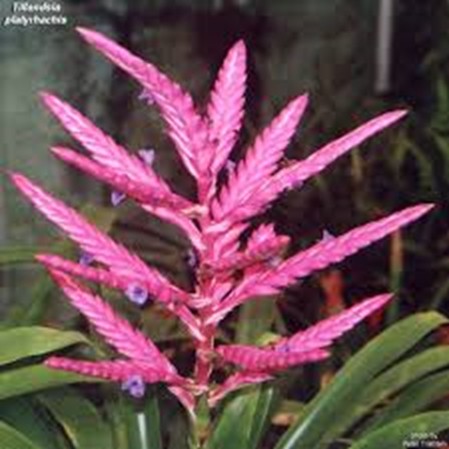
Left: Tillandsia ‘Creation’ now becomes a bigeneric xWallfussia ‘Creation’ being a cross between Wallisia cyanea; and Right: Barfussia platyrhachis
NEWS IN BRIEF:
NEW MEMBER: A very warm welcome to Anne Mobbs who joined at our March meeting. We wish you a long and happy time with our Society.
MONTHLY RAFFLE PRIZE ROSTER:
- April - Jim Clague, Jørgen Jakobsen, Les Thain, Fred Mirande
- May - Laurie Dorfer, Edwina Caruana, Eileen Killingley, Suzanne Burrows
- June - Freda Kennedy, Maureen Wheeler, Sharyn Baraldi, Jim Beverstock
- July - Max Williams, Mary Bennis, Doreen Netting, Noel Kennon
- August - Neville Wood, Melissa Talbot, Lydia Chinnock, Rhonda Grant
- October - Beth Clague, Barbara Jones-Beverstock, Ted Clare, Steve Wain
- November - Noel Kennon, Michael Drury, Deniece Crutchley, Maadi McKenna
- February 2018 - Fred Burrows, Monica De Clouett, Meri Stefanidakis, Maria Jakobsen
MEMBERSHIP RENEWAL:
Fees are due and payable by June 30th and, hopefully, to make it more convenient for our members who do not attend meetings on a regular basis, we have arranged for a direct transfer system to make payment. Our bank details are:
Illawarra Credit Union; BSB Number 802249; Account Number 249 039 602.
GENERAL MEETING - Saturday April 1st – “My Garden” by Lydia Chinnock:
Members of the Illawarra Bromeliad Society Inc. have been impressed by the consistently high quality of plants that Lydia entered in the show competitions last year and in the monthly competitions for the last two or three years. Her efforts in growing top quality plants have been rewarded by winning the Dulcie Doonan Memorial Award for the best entry containing a cryptanthus plant in the Artistic Category at the Show, and also winning the Open Points Score Award for 2016.
She and Ian moved into a new home in Brooks Reach, Horsley some three years ago and were immediately faced with a building site. Not only did they rehabilitate the site but they turned it into a show garden, reflecting her artistic flare and comprising a series of balanced areas. Few members have had the pleasure of visiting this new garden which will be on the Visits Program for 2018. In the meantime, at the April meeting, Lydia, with assistance from Ian, will be presenting a series of photographs showing off their horticultural achievements during the last three years.
WORKSHOP - APRIL 22:
The first workshop of the year will be held at John and Rita Toolan’ lovely property at 5 Rondanella Drive, Kanahooka (4261 1773) which will feature: 1) taking pups and potting up; and 2) mounting tillandsias. Members who would like to learn how to pot, please bring a pot and some potting mix; we will provide the plant, the fertiliser and the name tag. For members who would like to learn how to mount a tillandsia please bring a plant and something to mount it on. While this is a workshop especially for novice growers--with Neville, Graham, Ann and Noel there to provide advice and help--all members are welcome.
This will kick off at 10 am with morning tea and for lunch John will do a sausage sizzle, with bread and sauce also provided, but it would be appreciated if you could bring salads, and cakes or slices to share. We will finish around 2 pm.
GENERAL MEETING – Saturday May 6th – “How to Grow Tillandsias” by Laurie Dorfer
Laurie Dorfer is well known in our Society for his skills in growing superb bromeliads, particularly tillandsias. This talk will be an introduction to tillandsias and how they are distinguished from other bromeliads. He will go on to describe where they come from and the many species varieties and hybrids. The talk will conclude with considerations about how they can be grown. Laurie will have various plants to illustrate features of the talk.
GARDEN VISITS – MAY 20:
The first round of garden visits for 2017 was very successful with 35 participants. For the second round of visits we will start at 10 am at the Berkeley home of President Barbara Jones-Beverstock where we will have morning tea. Contributions of cake or slice will be welcome. We then move on to Neville Wood’s at Shellharbour where he will have a selection of plants for sale—nothing over $10. Please bring a bag or box. Finally we will move south to Kiama and Rhonda Patterson’s where we will have lunch [BYO]. Rhonda will provide tea and coffee but cake and slice to share will be appreciated. More details available closer to the event.
GENERAL MEETING – Saturday, June 3: “What Judges Look For” by Edwina Caruana and Laurie Dorfer:
As most members know, Edwina and Laurie are both members of our Society, are both accredited bromeliad judges and both have judged the competitions in our Annual Show in recent years. To most members the way in which judges go about selecting the winning plants in each competition is a mystery and, consequently, they are uncertain about how to address those features that the judges specifically look for. This presentation has been designed to help our members look at their plants through the judges’ eyes and so give themselves a better chance of presenting award-winning plants.
GENERAL MEETING – Saturday July 1:
It is now a tradition of the Society that the July meeting is a social function of some kind. In the past we have enjoyed “Christmas in July” and “Soup n’ Sweets”. The function for this year has yet to be decided by the Committee but rest assured it will be as enjoyable as ever. Your entertainment for the day will be a power point report on the Sunnybroms Conference being held over 4 days at the end of March/beginning of April at Caloundra, Queensland where twelve of our members are registered to attend.
WORKSHOP #2 – Saturday, July 15:
This workshop, to be held at the home of Lorraine and Fred Mirande, will concern the preparation of entries for the Artistic Section of the Annual Show. The tutor will be Elizabeth Bevan and details of the session will be circulated closer to the event.
Fred will be doing a sausage sizzle and participants will be asked to bring salads, cakes and slices for morning tea and lunch.
UPCOMING EVENTS :
| COLLECTORS’ PLANT FAIR – HAWKESBURY RACE CLUB, CLARENDON Sat 8am–4pm/Sun 9am-4pm - | |
| BROMELIAD FAIR Concord Senior Citizens Centre, 9-11 Wellbank Street, Concord. Sat10am–4 pm/Sun9am–12noon | |
| BROMELIAD SOCIETY OF AUSTRALIA – AUTUMN SHOW CASTLE HILL SHOWGROUNDS – Sat 9am–4pm/Sun 10am–3pm | |
| ILLAWARRA BROMELIAD SOCIETY SPRING SHOW – Uniting Church Hall, Russell Street, CORRIMAL | |
| BROMELIAD SOCIETY OF AUSTRALIA – SPRING SHOW CASTLE HILL SHOWGROUNDS – Sat 9am–4pm/Sun 10am–3pm |
MONTHLY PLANT COMPETITION RESULTS:
February 4: Plant Results
OPEN
1st = Lydia Chinnock = Neoregelia ‘Shelldance’
2nd = Steve Wain = Aechmea ‘Roberto Menescal’
3rd = Sandra Carnie = Neoregelia ‘Enchanted’
NOVICE
1st = Michael Drury = Guzmania ‘Torch’
2nd = Michael Drury = Vriesea hybrid
3rd = Michael Drury = Billbergia vittata
TILLANDSIA
1st = Graham Bevan = xWallfussia ‘Creation’
2nd = Lydia Chinnock = Wallisia cyanea
2nd = Steve Wain = Tillandsia lampropoda
3rd = Steve Wain = Barfussia platyrhachis
May 4 PLANT RESULTS
OPEN
1st = Lydia Chinnock = Canistropsis billbergioides ‘Citron’
2nd = Steve Wain = Aechmea ‘Pilfered’
2nd = Glenrae Barker = Neoregelia ‘Fantasia’
3rd = Yvonne Perinotti = Neoregelia ‘Birdrock’
3rd = Max Williams = Cryptanthus garden
NOVICE
1st = Pam Townsend = Billbergia pyramidalis
TILLANDSIA
1st = Steve Wain = Tillandsia leiboldiana
PLANTS BROUGHT TO OUR MARCH 2017 MEETING:
CHANGES IN NOMENCLATURE: TEN NEW GENERA ESTABLISHED:
Attendees at the 2013 ‘Cool Broms’ Conference will remember well an entertaining talk by José Manzanares. We were privileged to get advance notice of a study involving DNA analysis of the subfamily Tillandsioideae in which it was shown that certain species were not sufficiently related to be retained in their present genera. It has taken some time to have the study reviewed and finally published in a recognized botanical journal, Phytotaxa. The outcome is that ten new genera have been established and some 49 species of Mezobromelia, Tillandsia and Vriesea have changed their names. Luckily not too many of these are in New Zealand so we do not have too many to alter. The name changes are as follows:
ANYONE HAVE WALLISIA CYANEA? LUTHERIA SPLENDENS?
Back in January 2014 this Newsletter finished a series of three articles about Tillandsia subgenera and concluded that:
“At the outset of these articles, I mentioned that the Tillandsia subgenera will likely be revised in the near future. Walter Till, who has also studied cacti (and in particular Gymnocalycium), is working on these changes. He and three other botanists at the University of Vienna did an earlier study in 2005 that suggested the current subgenera might not be valid, but the authors felt more intensive study was needed. Barfuss, M.H.J., Samuel, R., Till, W., Stuessy, T.F., 2005. Phylogenetic relationships in subfamily Tillandsioideae (Bromeliaceae) based on DNA sequence data from seven plastid regions. A.J. Bot. 92, 337-351. The 2005 study more or less found these six subgenera were a mess from a DNA standpoint. These studies essentially analyze some of the DNA of the species and then prepare a tree-like diagram based on the way the species group together based on the DNA analysis. For the subgenera to be valid from a DNA standpoint, the tree would have six major branches, and each branch would include one subgenera.”
It has taken about a decade, but finally there is some resolution. In a very lengthy article, the genera Tillandsia and Vriesea have been revised to reflect DNA analysis. Barfuss, M.H.J.; Till, W.; Leme, E.J.C.; Pinzón, J.P.; Manzanares, J.M.; Halbritter, H.; Samuel, R. & Brown, G.K. (2016) Taxonomic revision of Bromeliaceae subfam. Tillandsioideae based on a multi-locus DNA sequence phylogeny and morphology. Phytotaxa 279(1): 001-097.
DNA analysis still leaves room for lumpers and splitters. The authors recognized this, and felt that a splitter’s approach was better since it would have been very difficult to find plant characteristics applicable to the groups if a lumping approach was used. They stated:
As a result, they created a number of new genera for both Tillandsia and Vriesea, though most of each genus remain the same. Some of the new names are below.
Most of us know the well-known T. cyanea. It and its relatives, like T. lindenii, are now considered Wallisia cyanea and Wallisia lindeniana. As an aside, the problems with the species names are horrific—the plant we know as T. cyanea was actually first called T. lindenii, as was T. lindenii. To add more confusion, the plant many of us know as T. lindenii may actually be a hybrid between cyanea and lindenii.
One of the most spectacular species is the aptly named T. grandis. Now it is called Pseudalcantarea grandis. A couple of other species are in this genus—P. viridiflora and P. macropetala.
Other new genera created from Tillandsia are Lemeltonia, Josemania and Barfussia. A bit more on the latter can be found under Member Photos. Many of the new genera are characterized by certain shapes of their stigma or pollen. For example, Barfussia have convolute-obconic stigma.
Similar divisions occurred for Vriesea. As noted above, Alcantarea and Werauhia still are good genera. Most vriesea species remain in the genus, but now there are five new genera—Goudaea, Jagrantia, Lutheria, Zizkaea, and Stigmatodon, as well as a Cipuropsis-Mezobromelia complex. Two of the more well-known species are now Lutheria splendens and L. glutinosa. Another is Goudaea ospinae, which has the unusual matte finished leaves, rather than glossy.
If you haven’t seen them, here are some sites with lists of all the species.
TILLANDSIA CYANEA {WALLISIA CYANEA} AND HER BIG SISTER, TILLANDSIA LINDENII {WALLISIA ‘DUVALII’(?)}
I have a large basket of Tillandsia cyanea and a pot of T. lindenii and I do not have any problem distinguishing between them. Apparently, though, from the time Linden first described T. cyanea in 1867 and Regel published his description of T. lindenii in 1868, taxonomists, the likes of Morren, Duval, Dombrain, Mez, as well as Linden and Regel themselves, have vacillated about which is which.
Aechmea ‘Pilfered’: Steve’s very striking plant is a cross between A. fendleri (dark form) and A. ‘Blue Tango’, made by Chester Skotak and registered in 2003. It is a large plant with the mature rosette reaching to 55 cm diameter x 50 cm high, the leaf width 6 cm and the upright inflorescence reaching to 70 cm tall. It is a median variegated form, having reverse variegation to the equally large A. ‘Buckwheat’, an albomarginated plant which turns pink in bright light. Both sported from the same parent plant from the cross.
Aechmea ‘Roberto-Menescal’: Another from Steve was this glorious aechmea, named and registered by Chester Skotak for its original grower, Roberto Menescal. It is a variegated cultivar of a dark form of A. chantinii from a batch of tissue cultured plants from the lab of Rolf Zornig of São Paulo, Brazil in 2000. What makes it so special are its central variegated stripes of cream and pink on the leaf top, with intense burgundy red on the leaf undersides. This plant can grow to very large sizes of up to twenty four to thirty inches tall [60-75 cm] and eighteen inches wide [45 cm]. As this plant comes from a very tropical habitat it is more sensitive to cold than most aechmeas. {Information from
Neoregelia ‘Shelldance’: Lydia’s lovely plant was in flower—something I’d not seen before, and this is borne out in the notes below which I have extracted from the Bromeliad Cultivar Register (7051).
N. ‘Shelldance’ was brought into Australia by Don Woods of Perth from the Shelldance Nursery in California, which had ‘Fairy Paint’ as the seed parent, pollen parent unknown. A note added to the BCR page on 2/2012 refers to questions asked at a Bromeliad Society of South Australia meeting about the odd-looking inflorescence, suggesting this may be a xNeotanthus hybrid. There is no proof but doubt was expressed in Andrew Steens’ the Connoisseur’s Guide, published in 2007: “Some people think it may be an intergeneric cross between a neoregelia and a cryptanthus. However, I suspect that it is simply an extreme variation of ‘Fairy Paint’. While this is unusual, it is not unheard of, with N. ‘Burnsie’s Spiral’ being one fairly common example. These types of plants almost never flower but continue to put out new leaves, eventually forming a stem that may reach 50 cm or more in height.” … We will leave this as a neoregelia because that is how it appears in collections throughout Australia.
Neoregelia ‘Walking Thunder’: Among the lovely dark-coloured neoregelias at our March meeting—including N. ‘Birdrock’and N. ‘Mandela’--was Max’s beautiful plant, a Sharon Peterson cross (from Hawaii, registered in 1995) with rich plum-coloured leaves with a green thumbnail at their tips and some green mottling. Seed parent ‘Hal Ellis’, pollen parent ‘Kahala Dawn’, with Neoregelia ‘Gladiator’ coming from the same cross.
Notes from Peter Waters (Reprinted from Bromeliad, J. BSNZI, January 2017, Vol. 57 No. 1)
Mezobromelia brownie => Gregbrownii brownii
Mezobromelia fulgens => Gregbrownii fulgens
Mezobromelia hutchisonii => Gregbrownii hutchisonii
Mezobromelia lyman-smithii => Gregbrownii lyman-smithii
Tillandsia acosta-solisii => Lemeltonia acosta-solisii
Tillandsia anceps => Wallisia anceps
Tillandsia asplundii => Josemania asplundii
Tillandsia cornuta => Lemeltonia cornuta
Tillandsia cyanea => Wallisia cyanea
Tillandsia delicatula => Josemania delicatula
Tillandsia dodsonii => Lemeltonia dodsonii
Tillandsia dyeriana => Racinaea dyeriana
Tillandsia grandis => Pseudalcantarea grandis
Tillandsia hamaleana => Racinaea hamaleana
Tillandsia laxissima => Barfussia laxissima
Tillandsia lindenii => Wallisia cyanea
Tillandsia macropetala => Pseudalcantarea macropetala
Tillandsia monadelpha => Lemeltonia monadelpha
Tillandsia narthecioides => Lemeltonia narthecioides
Tillandsia pinnata => Josemania pinnata
Tillandsia platyrhachis => Barfussia platyrhachis
Tillandsia pretiosa => Wallisia pretiosa
Tillandsia scaligera => Lemeltonia scaligera
Tillandsia singularis => Josemania singularis
Tillandsia triglochinoides => Lemeltonia triglochinoides
Tillandsia truncata => Josemania truncata
Tillandsia umbellata => Wallisia lindeniana
Tillandsia venusta => Racinaea venusta
Tillandsia viridiflora => Pseudalcantarea viridiflora
Tillandsia wagneriana => Barfussia wagneriana
Vriesea ospinae => Goudaea ospinae
Vriesea amadoi => Stigmatodon amadoi
Vriesea appariciana => Stigmatodon apparicianus
Vriesea belloi => Stigmatodon belloi
Vriesea bi-beatricis => Lutheria bi-beatricis
Vriesea bifida => Stigmatodon bifidus
Vriesea brassicoides => Stigmatodon brassicoides
Vriesea chrysostachys => Goudaea chrysostachys
Vriesea costae => Stigmatodon costae
Vriesea croceana => Stigmatodon croceanus
Vriesea euclidiana => Stigmatodon euclidianus
Vriesea fontellana => Stigmatodon fontellanus
Vriesea funebris => Stigmatodon funebris
Vriesea gastiniana => Stigmatodon gastinianus
Vriesea glutinosa => Lutheria glutinosa
Vriesea goniorachis => Stigmatodon goniorachis
Vriesea harrylutheri => Stigmatodon harrylutheri
Vriesea magnibracteata => Stigmatodon magnibracteatus
Vriesea monstrum => Jagrantia monstrum
Vriesea multifoliata => Stigmatodon multifoliatus
Vriesea plurifolia => Stigmatodon pludrifolius
Vriesea rosulatula => Stigmatodon rosulatulus
Vriesea sanctateresensis => Stigmatodon sanctateresensis
Vriesea soderstromii => Lutheria soderstromii
Vriesea splendens => Lutheria splendens
Vriesea tuerckhelmii => Zizkaea tuerckhelmii
I know that changing the names seems quite an imposition, but eventually we will appreciate the fact that similar plants are grouped together which is what this is all about.
By Mike Wisnev, SFVBS President (mwisnev@gmail.com)
(Reprinted with permission from San Fernando Valley Bromeliad Society Newsletter – November 2016)
“In our opinion, a stable classification of Bromeliaceae subfam. Tillandsioideae has (1) to be based on phylogenetic relationships (i.e., monophyletic units) and (2) should have predictable morphological determinability by synapomorphic combinations of characters, when at least flowering material is available. We therefore evaluated the two most realistic approaches: (1) recognizing three small genera (Catopsis, Glomeropitcairnia, and a new genus segregated from Mezobromelia), one medium size genus (Guzmania), and lumping remaining species into two large genera (Vriesea and Tillandsia) by sinking four well-established and morphologically mostly well-defined genera into synonymy (into Tillandsia: Racinaea; into Vriesea: Alcantarea, Mezobromelia s.str., and Werauhia); or (2) recognizing the six already widely accepted genera (Alcantarea, Catopsis, Glomeropitcairnia, Guzmania, Racinaea, and Werauhia) and splitting three existing genera (Mezobromelia, Tillandsia, and Vriesea) into smaller groups. The first scenario would primarily create the two morphologically very heterogeneous and ill-defined genera, Vriesea and Tillandsia, both with no predictive value, meaning that synapomorphic combinations of diagnostic morphological characters are absent to define these genera for all species that have to be included. The second scenario allows the recognition of several smaller genera, which are well circumscribed morphologically and are monophyletic, and an emended narrower circumscription of established genera. We therefore implemented the second splitting approach since also previous investigations have clearly shown that only smaller groups can be morphologically well characterized (e.g., Costa et al. 2014, Grant 1995a, Kromer et al., 2012, Leme 2007, Spencer & Smith 1993, Versieux & Wanderley 2015).” Id. At 31.
1. . Accepted Bromeliaceae names: http://botu07.bio.uu.nl/data/bromNames.php
2. . Bromeliaceae names and synonyms: http://taxonlist.florapix.nl/
By Larry Giroux (Reprinted from the Caloosahatchee BS’s Meristem May 2006.)
{In a more recent article “Wallisia or Single Paddles” by Derek Butcher (2016) Derek tells us that T. lindenii no longer exists and that Wallisia lindeniana is the new name for T. umbellata. I will reprint his article in our July Newslink to help clarify the matter regarding the new name for T. lindenii —Ed.} . .
. .  . .
. . 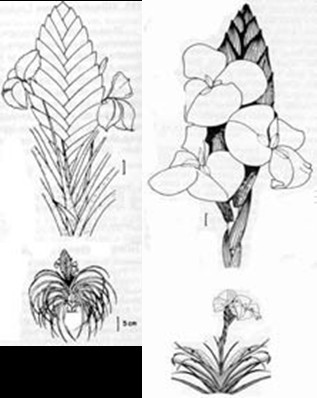
Drawing by Morris Henry Hobbs of (left) Tillandsia lindenii, (center) Tillandsia ‘Emilie’, (right) cynea(L) v. lindenii(R). Produced for the cover of the BSI Journal. In late 50s and early 60s M.H. Hobbs provided nearly 20 drawings for the bi-monthly BSI publication.
There is no doubt that part of the confusion lies in the similarity of these two plants. Another factor, which may add to our misunderstanding of these two species, is whether the identifications were based on living or herbarium specimens. Soon after Regel named Tillandsia lindenii (there’s even confusion about whether or not the spelling is lindeni, lindeniana or lindenii), Morren acquired a collection of plants resembling T. lindenii, but with short scapes. Whether or not he knew about the description of Tillandsia cyanea by Linden in 1867 is unclear; nevertheless, he named these plants Tillandsia lindenii. Regel, possibly unfamiliar with the plant that Linden first described as Tillandsia cyanea, noted a significant difference between the plant he, Regel, had described and the one that Morren was giving the same name to, and he immediately renamed these plants Tillandsia morreniana.
It was some time later that this mistake was noted, but by that time the name had been established in cultivation. Although you are unlikely to see this named used today, in literature the names Tillandsia cyanea and Tillandsia morreniana remain synonymous.
In the mid 20th century, a hybrid of Tillandsia cyanea and Tillandsia lindenii, called T. ‘Emilie’ was created by D. Barry. This new cross reportedly had the advantage of being a more robust and a more easily grown plant. How widely distributed in cultivation this plant became is unknown. Fortunately the majority of Tillandsia cyanea being raised for mass sale was occurring in Europe, where this hybrid presumably had not been established. In 1982, Cornelius Bak, the largest commercial grower of bromeliads in the world, added Tillandsia cyanea to their list of bromeliads they were mass producing for sale. It is likely that the “Bak stock” has infiltrated the U.S. market sufficiently to assure a relatively pure line of the original Tillandsia cyanea. The next time that you go to a flea market, a grocery store or fruit stand where they’re selling plants, check out the label on the tiny Tillandsia cyanea in bloom and see where it comes from. {The illustration shows the BSI Journal cover drawing by M.H. Hobbs of the hybrid of T. cyanea and T. lindenii named Tillandsia ‘Emilie’.}
Although these two plants are two distinct species, their similarities outweigh their differentiating characteristics. Both species are stemless, with T. cyanea reaching a height of 25 to 30 cm and
T. lindenii can exceed 40 cm, each with their inflorescence. Other than the additional length for Tillandsia lindenii, the leaf blades for both are narrowly triangular, long tapered, about 1.5 cm wide at the base, dark green with red or brown stripes more prominent on the upper side at the base of each leaf, which tends to persist for the length of the leaf blade in Tillandsia lindenii and solid on the undersides toward the proximal portion of the plant in both species. The scape bracts are nearly identical. They are similar to the leaves—pointed, upright, slightly scaled and green with pencil-like red stripes only seen in Tillandsia lindenii. The floral bracts are also much the same, being tightly overlapping, elliptical, pointed, and longer than the sepals. The distinction here is again size with
T. cyanea having 4-5 cm long floral bracts with T. lindenii’s floral bracts approximately 5 cm or greater. The floral bracts have the same width, but because of the shorter length the overall simple-spiked, sword-shaped inflorescence of T. cyanea appears to be more elliptical than that of T. lindenii, which is slightly lanceolate. Although the original descriptions given for the bracts of these two plants state they can be pink or green, it is my experience these color variations are sensitive to cultural differences with high light producing the more intense pink or rosy color.
The pictures on the right, above, are horticultural drawings which demonstrate some of the more obvious differences between these two tillandsias. T. cyanea (left) has a more blunted, elliptical “paddle-shaped” inflorescence and a shorter scape than T. lindenii (right). If you look closely, the artist has delineated the white throat of the flowers of T. lindenii var. lindenii. (From Smith and Downs, l977.)
The pièce de résistance for both plants is their very unique and showy flowers. Unusually large for their genus, the flowers are composed of three 2-3 cm long by 2-3 cm wide petals with stems 3-4 cm long. During the nearly 140 years since their description, the original dark blue assigned to the color of the petals is open for discussion. Today dark blue, purple, lavender, pink, white and many other shades of rose, purple and blue can be found in both species. Although the distinct white throat of the flower is noted only in the description of T. lindenii, variations were soon found in nature of T. cyanea (var. tricolor) with a white throat and T. lindenii (var. caeca) with a solid blue flower.
Although it is agreed that these plants were first discovered growing as epiphytes in Ecuador and northern Peru from about 2,000 to 3,500 feet altitude, some reports indicate that plants in their habitat were very happy growing in the tree tops exposed to high light as well as in the lower portions of humid tropical jungles. They have been found growing on rocks, in sandy soils and tolerating both low and high temperatures. Needless to say they have become well adapted to the myriad of growing conditions found in cultivation.
These tillandsias are unique in that they seem to prefer to be grown in a well-draining medium rather than epiphytically. Under these conditions they develop a significant root system which appears to produce a more robust and prolific plant. My plants do very well in wooden slatted or open wire baskets lined with sphagnum moss and filled with an epiphytic mix. In this loose medium, they can tolerate frequent watering and extend their roots. Both time-release and soluble fertilizer is appreciated. Remember to give your plants enough space to expand, it is not unusual for a single Tillandsia cyanea to produce 10 to 12 offsets. Even with the grocery store-bought plants there is still a chance that by cutting off the spent inflorescence, providing a well-drained medium, moisture and fertilizer, you can continue to enjoy generations of these plants for years to come.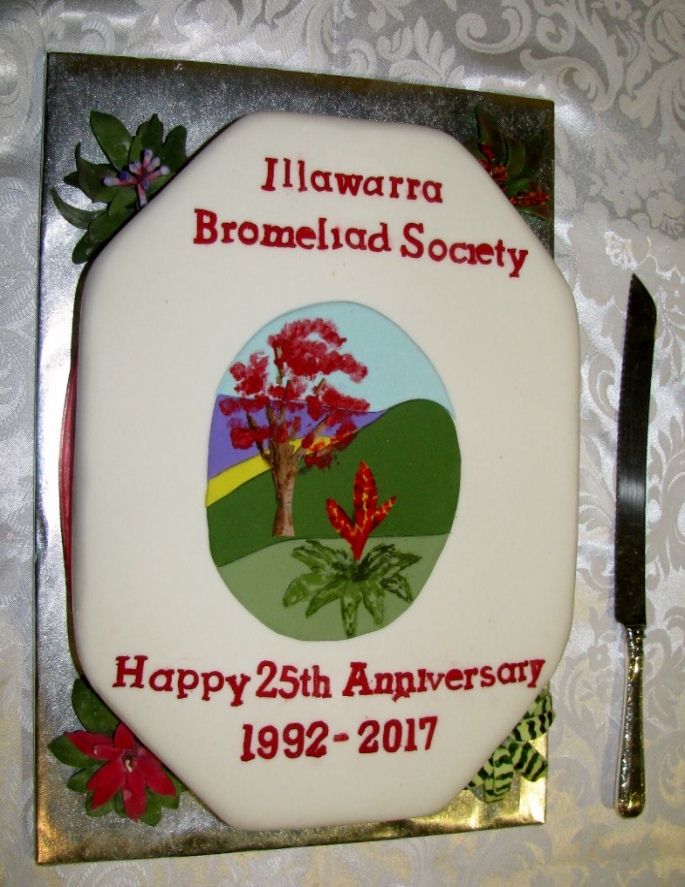 . . .
. . .  . . .
. . . 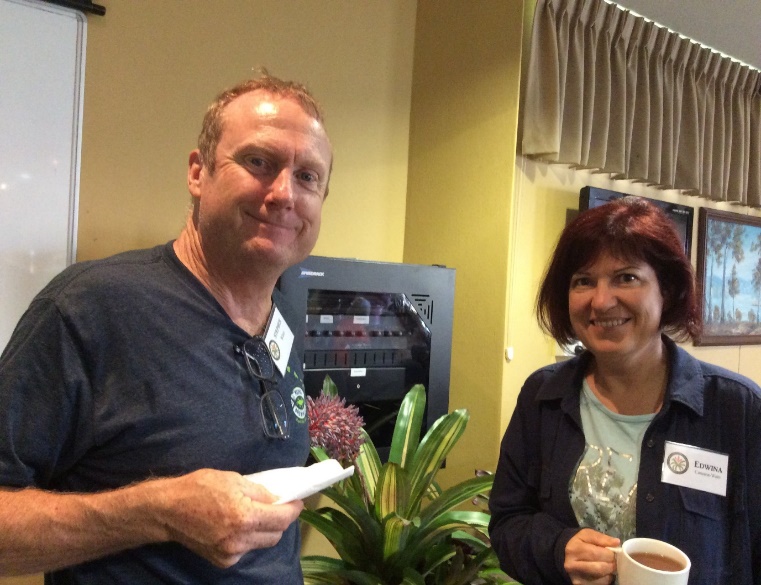
 . . .
. . . 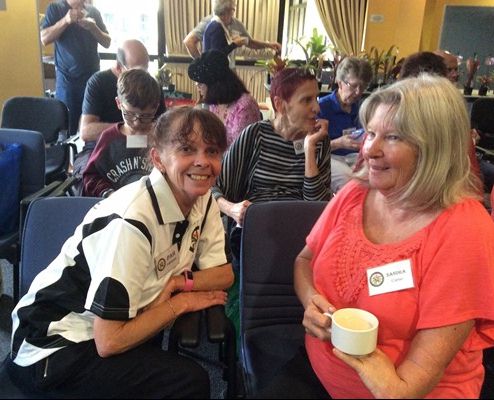 . . .
. . . 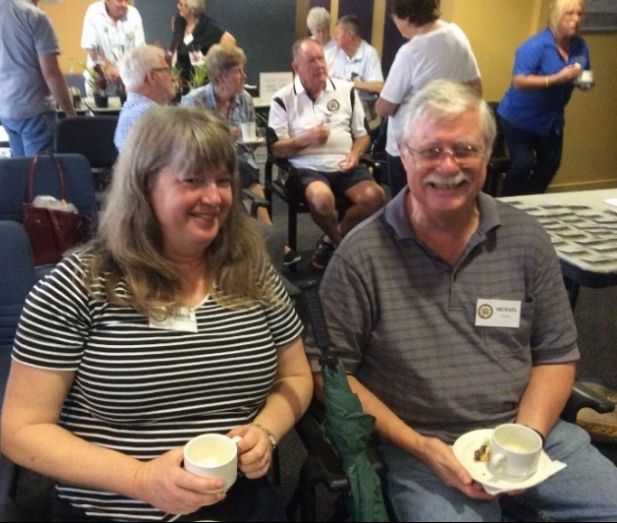
 . . .
. . . 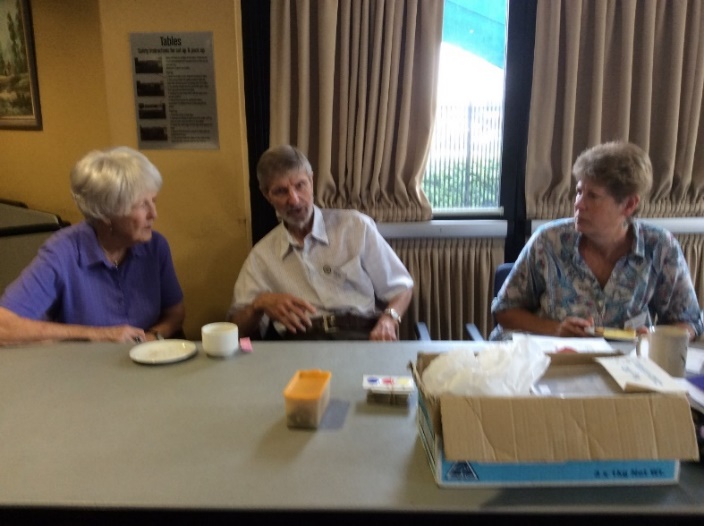 . . .
. . . 
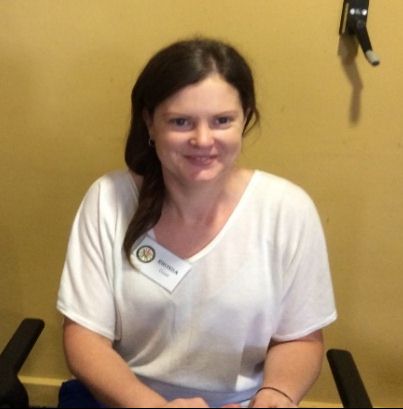 . . .
. . .  . . .
. . . 
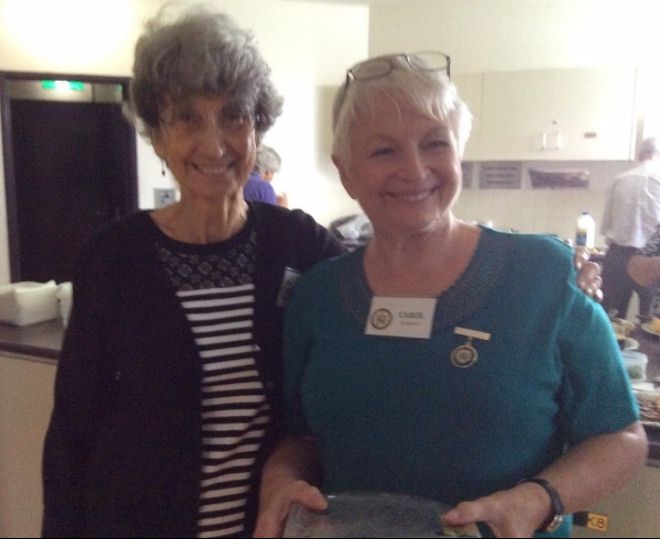 . . .
. . .  . . .
. . . 